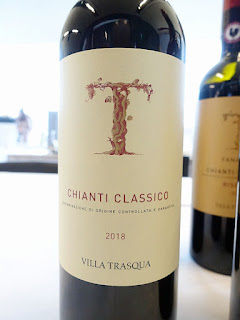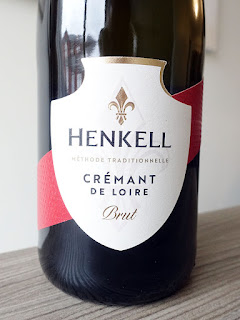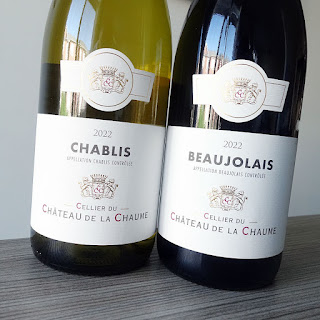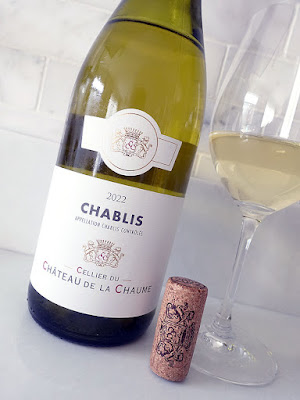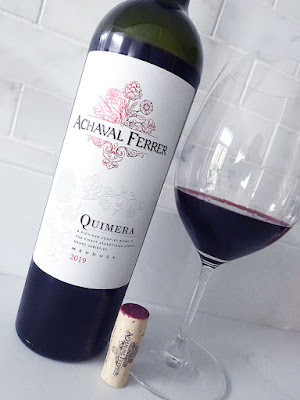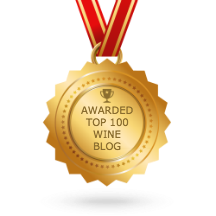Here's my top wine picks from the September 9, 2023 LCBO VINTAGES New Release Collection. As per usual, the first release of September coincides with harvest here in Ontario and, as such, the theme of this release focuses on wines from Ontario. It is a fairly sized release with 132 wines and more than 30 of which fall into the "Online and Flagship Exclusive" category. All of the wines should be in stores by this Saturday.
We begin with the theme, which features the brilliant wines from Ontario. There are 20 wines from 20 different wineries in the theme, and includes a mini-profile of each winery in the printed catalogue. There are many nice wines among the 20, with a few recommended previously, so I have elected to include just three wines among my top wine picks this time around - a pair of delicious Niagara Riesling wines, with the one from Vineland Estates the sweeter of the two, and the Late Harvest Vidal dessert wine which is very sweet for a Late Harvest wine.
Among my red wine picks, dominating the list is Italy with 6 recommendations. We start in Piedmont with a pair of Barolo wines which are, of course, made with the noble Nebbiolo grape varietal. The next three wines are all Chianti Classico wines from Tuscany - the Castello di Bossi, which is the Wine of the Month, is made with 100% Sangiovese, while the Volpaia is 90% Sangiovese and 10% Merlot, and the organic Trasqua is mainly Sangiovese with about 10% each Merlot and Cabernet completing the blend. The last wine from Italy is from the volcanic soils of Mount Etna in Sicily and it is composed of Nerello Cappuccio and Nerello Mascalese. Red wines from France include a Bordeaux blend of 75% Merlot, 23% Cabernet Sauvignon, and 2% Petit Verdot, while the Languedoc red is composed of 60% Syrah and 40% Grenache, and the Crozes-Hermitage is straight Syrah.
All of my white wine picks from the main release are single varietal wines. For Sauvignon Blanc fans, there is a Sancerre from Loire, as well as a pair of Sauv Blanc wines from Marlborough. For Chardonnay wine lovers, there is a fine Chablis Premier Cru from Burgundy. Other fine wines include a pair of Grüner Veltliner wines from Austria, and an Assyrtiko from Santorini. If you like some sweetness in your wines, try the latest vintage of a lovely Riesling from Mosel.
The only bubbles among my recommendations is a vintage Crémant from Loire that is a blend of 60% Chenin, 20% Chardonnay, 15% Pinot Noir, and 5% Cabernet Franc.
Enjoy my top wine recommendations from this release! Cheers!
We begin with the theme, which features the brilliant wines from Ontario. There are 20 wines from 20 different wineries in the theme, and includes a mini-profile of each winery in the printed catalogue. There are many nice wines among the 20, with a few recommended previously, so I have elected to include just three wines among my top wine picks this time around - a pair of delicious Niagara Riesling wines, with the one from Vineland Estates the sweeter of the two, and the Late Harvest Vidal dessert wine which is very sweet for a Late Harvest wine.
Among my red wine picks, dominating the list is Italy with 6 recommendations. We start in Piedmont with a pair of Barolo wines which are, of course, made with the noble Nebbiolo grape varietal. The next three wines are all Chianti Classico wines from Tuscany - the Castello di Bossi, which is the Wine of the Month, is made with 100% Sangiovese, while the Volpaia is 90% Sangiovese and 10% Merlot, and the organic Trasqua is mainly Sangiovese with about 10% each Merlot and Cabernet completing the blend. The last wine from Italy is from the volcanic soils of Mount Etna in Sicily and it is composed of Nerello Cappuccio and Nerello Mascalese. Red wines from France include a Bordeaux blend of 75% Merlot, 23% Cabernet Sauvignon, and 2% Petit Verdot, while the Languedoc red is composed of 60% Syrah and 40% Grenache, and the Crozes-Hermitage is straight Syrah.
All of my white wine picks from the main release are single varietal wines. For Sauvignon Blanc fans, there is a Sancerre from Loire, as well as a pair of Sauv Blanc wines from Marlborough. For Chardonnay wine lovers, there is a fine Chablis Premier Cru from Burgundy. Other fine wines include a pair of Grüner Veltliner wines from Austria, and an Assyrtiko from Santorini. If you like some sweetness in your wines, try the latest vintage of a lovely Riesling from Mosel.
The only bubbles among my recommendations is a vintage Crémant from Loire that is a blend of 60% Chenin, 20% Chardonnay, 15% Pinot Noir, and 5% Cabernet Franc.
Enjoy my top wine recommendations from this release! Cheers!
Red Wine:
- CHÂTEAU DE TRÉVIAC CORBIÈRES 2020 - AP, Languedoc, France (#670505) (XD) - $17.95 90 pts wine review
- VILLA TRASQUA CHIANTI CLASSICO 2018 - DOCG, Tuscany, Italy (#121160) (XD) - $19.95 89 pts wine review
- BYRON & HAROLD ROSE & THORNS CABERNET SAUVIGNON 2020 - Great Southern, Western Australia (#30891) (XD) - $21.95
- CASTELLO DI BOSSI C. BERARDENGA CHIANTI CLASSICO 2020 - DOCG, Tuscany, Italy (#994608) (XD) - $22.95 90 pts wine review
- TORNATORE ETNA ROSSO 2019 - DOC, Sicily, Italy (#487090) (XD) - $25.95
- CAVE DE TAIN HÉRITIERS GAMBERT NOBLES RIVES CROZES-HERMITAGE 2021 - AP, Rhône, France (#572230) (XD) - $33.95
- VOLPAIA CHIANTI CLASSICO 2020 - DOCG, Tuscany, Italy (#953828) (XD) - $36.95
- MICHELE CHIARLO TORTONIANO BAROLO 2018 - DOCG, Piedmont, Italy (#586388) (XD) - $49.95 92+ pts wine review
- AURELIO SETTIMO BAROLO 2017 - Sustainable, DOCG, Piedmont, Italy (#291559) (XD) - $57.95 93 pts wine review
- CHÂTEAU BRANAS GRAND POUJEAUX 2019 - AC Moulis-en-Médoc, Bordeaux, France (#34383) (XD) - $65.95 FE
White Wine:
- HÃHÃ SAUVIGNON BLANC 2022 - Marlborough, South Island, New Zealand (#388363) (XD) - $18.95 90 pts wine review
- LITORALE VAL DELLE ROSE VERMENTINO 2022 - DOC Maremma Toscana, Italy (#17703) (XD) - $18.95
- ATTEMS PINOT GRIGIO 2022 - DOC Friuli, Italy (#707950) (XD) - $19.95
- LEINDL GV GRÜNER VELTLINER 2021 - Niederösterreich, Austria (#30599) (XD) - $19.95 FE
- 13TH STREET JUNE'S VINEYARD RIESLING 2021 - Sustainable, VQA Creek Shores, Niagara Peninsula, Ontario, Canada (#147512) (D) - $21.95
- VINELAND ESTATES ELEVATION ST. URBAN VINEYARD RIESLING 2021 - VQA Niagara Escarpment, Ontario, Canada (#38117) (M) - $22.95 90 pts wine review
- PAULY GENERATIONS RIESLING 2021 - Qualitätswein, Mosel, Germany (#21033) (M) - $25.95 FE 90 pts wine review
- STADT KREMS RIED WEINZIERLBERG 1ÖTW GRÜNER VELTLINER 2021 - DAC Kremstal, Austria (#33783) (XD) - $28.95
- SAINT CLAIR WAIRAU RESERVE SAUVIGNON BLANC 2022 - Marlborough, South Island, New Zealand (#415653) (XD) - $32.95 FE
- JEAN-MAX ROGER CUVÉE LES CAILLOTTES SANCERRE 2021 - AC, Loire, France (#65573) (XD) - $36.95 93 pts wine review
- DOMAINE HAMELIN BEAUROY CHABLIS 1ER CRU 2021 - AC, Burgundy, France (#391805) (XD) - $45.95 FE 94 pts wine review
- VASSALTIS SANTORINI ASSYRTIKO 2022 - PDO, Greece (#33859) (XD) - $70.95 FE
Sparkling Wine:
- HENKELL BRUT CRÉMANT DE LOIRE 2016 - Traditional method, AP, Loire, France (#29893) (D) - $21.95 88+ pts wine review
Dessert Wine:
- HENRY OF PELHAM SPECIAL SELECT LATE HARVEST VIDAL 2019 - Sustainable, VQA Ontario, Canada (#395228) (S) (375 mL) - $19.95






